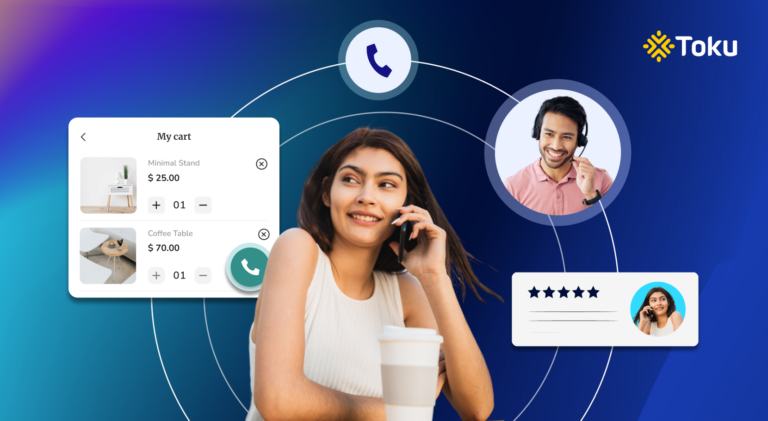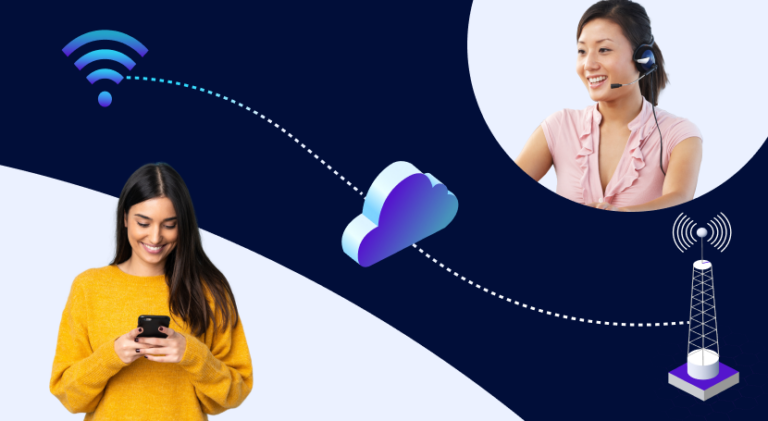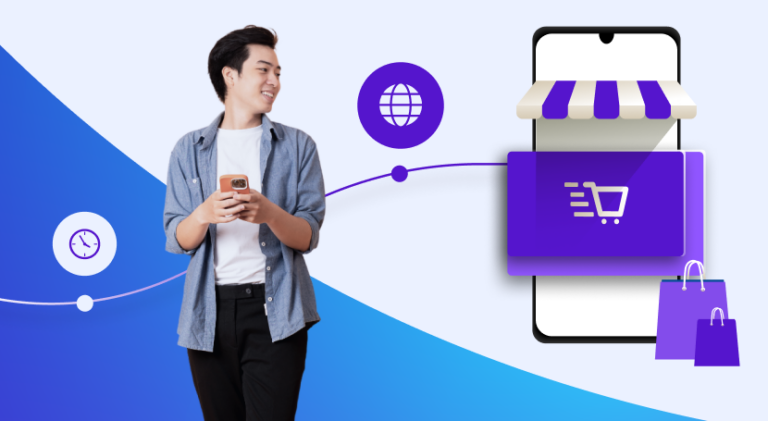If you have a business with operations in Singapore and are looking to register in the Singapore SMS Sender ID Registry (SSIR) before January 31, 2023, here is what you need to do.
The human voice is a powerful instrument. Yet amidst the recent rise in popularity of apps and texting on our phones, it’s easy to assume the humble phone call has been relegated to the sidelines. It seems almost ‘old-fashioned’ to pick up the phone and call someone.
On the business side of things, with every unicorn having their own app which mostly relies on text inputs and taps to function, the case for embedding voice calls – or in-app calling – within the app seemed almost redundant at first glance.
That is, until the customer support queries come in…
As witnessed during the pandemic, nearly every business experienced a boom in the reliance on phone calling. Amidst the stay at home orders and safe distancing measures, customers needed more than just text messages to connect. They needed the humble phone call to get through to customer support fast and communicate their needs promptly without having to wait for a reply that might or might not arrive in their chat or email inbox.
Enterprises have now wised up to the fact that there are tremendous benefits to not just keeping the voice call channel open to customers, but strategically embedding it as part of their apps to add value to the customer experience. This is partly because modern programmable voice APIs are capable of adding much more than just basic voice calling functionality within a platform.
In this article, we’re going to explore some of the more interesting value-adds of in-app calling, and present how they can strategically benefit a business of any size or vertical.
1. Less frustrating customer experience with in-app calling
Picture this: You have a pressing problem that needs immediate resolution – such as a lost item on your last ride-share. Which would you prefer – hunting down the ride-sharing app business contact number and calling them, or a phone call to a customer support agent directly embedded within the app itself?
Chances are, you’d pick the latter simply because it’s more seamless.
The simple truth is that not having to exit the app in order to call customer support is easier, and increases the level of trust that the call being made isn’t a spam call. This is exactly where the human touch comes into play generating a win-win situation for both customer and the business.
2. Cost effective in-app voice calls
Unlike traditional telephony solutions, in-app voice calls can seriously reduce the price of domestic and international calls used for customer support.
This is because no expensive equipment or maintenance is needed on the enterprise side of things. All you need is the service provider’s Voice API to embed the voice channel anywhere on your mobile applications, and you’ll be able to build and scale voice calling experiences across the globe, the way you want.
Different providers will have different pricing plans to fit your business needs, so you can easily pick one where you only pay for what you use – no hidden costs.
Enterprises can also realise more operational efficiency when they start to scale customer support internationally using in-app calling. Toku Voice APIs for instance let you easily integrate SIP, VoIP or PSTN calling into any business application with virtual numbers in 120+ countries at lower call rates that are closer to the connectivity source.
3. Superior voice call quality
Enterprises that take advantage of cloud phone systems often experience a dramatic increase in voice call quality. The same happens when they leverage cloud telephony via in-app calling.
Having superior voice quality over a phone conversation with customers immediately sets you apart from businesses still adhering to traditional phone services. When communication is smooth because clarity is impeccable, with no interference, latency, or drop-outs, customer satisfaction levels will immediately improve. You can ensure impeccable call quality in your in-app calling by opting for a provider that routes calls via their own telecommunications infrastructure or works network partners closer to the source.
4. Call recording capability
Unlike traditional telephony solutions, most in-app calling Voice APIs allow you to record and save calls.
In customer support call scenarios, call recordings can be invaluable for evaluating agent productivity and performance metrics. Furthermore, the recordings can be easily shared internally with relevant departments so that issues can be quickly resolved.

Get monthly nuggets of wisdom for all things customer experience in your inbox
Depending on the use-case of an enterprise’s app, customers could also use the in-app call recording ability to record audio conferences and share them if needed.
5. Route from in-app calls to IVR
One of the most powerful integrations commonly used with in-app calling is Interactive Voice Response (IVR).
An IVR paired up with in-app calling is one of the best ways to resolve a particular kind of customer enquiry that occurs frequently and requires urgent attention – like lost-and-found queries for example.
Of course this requires that enterprises understand and identify their customers’ common queries in the first place, which will allow them to plan the logic within the IVR flows to best address the common queries being routed through the app. Being able to answer customer queries efficiently like this through in-app calling can be a powerful way to improve the customer experience via personalisation.
6. Boost trust by improving user confidentiality
Because voice communication APIs are incredibly malleable pieces of code, it’s easy to integrate them with almost any other app or platform to gain specific capabilities, like protecting user confidentiality.
For example you can add “Callback” functionality which helps you reduce call abandonment rates and customer frustration by enabling callback features for customers without needing access to their number.
Another add-on to in-app calling that preserves number confidentiality is Number Masking. Number masking is a great way for businesses to protect customers’ identity, and avoid misuse of sensitive data. As its name suggests, number masking allows you to connect two parties without revealing either one’s number. Many ride-sharing, logistics and delivery enterprises already use number masking to protect the identities of their drivers, delivery personnel, vendors, and customers.
In fact, Gojek uses Toku’s communication APIs for in-app calling with IVR and number masking!
7. Effortless switching from VoIP to telco calls
If you thought in-app calling only works when you’re connected to the internet, think again.
Most modern programmable voice APIs are capable of automatically switching between conventional telephony calls and VoIP calls depending on availability of internet connectivity.
For the end user, this means that even if they’re unable to connect to Wi-Fi or LTE for whatever reason while calling within the app, as long as the app has embedded in-app calling capability, it will seamlessly switch to a regular phone call on the telephony network. It might sound like a minor detail, but being able to switch effortlessly like this has a big impact on in-app calling experience for multiple industries such as ride-sharing apps, food-delivery apps, and logistics apps.
Why? Because customers, operators and delivery personnel are all on the move.
There’s literally no way for them to ensure they’re connected to the internet 24/7 – some zones will always have poor access to LTE. In such situations, triggering the traditional phone call directly from the app is a good backup that ensures business continuity and a consistent customer experience.
In-app calling is in
As you can see, in-app calling has quite a few benefits for any type of business. What’s more, setup is fast, efficient, and the cost of implementation is low.
Ultimately, whichever platform you embed it in, in-app calling can help you to personalise the customer experience the way you want because everything is now situated conveniently in one place.
 V K Sanjeed
V K Sanjeed 

 Benson Chan
Benson Chan 
 Girish Dharmaraj
Girish Dharmaraj 
 Nora Huin
Nora Huin